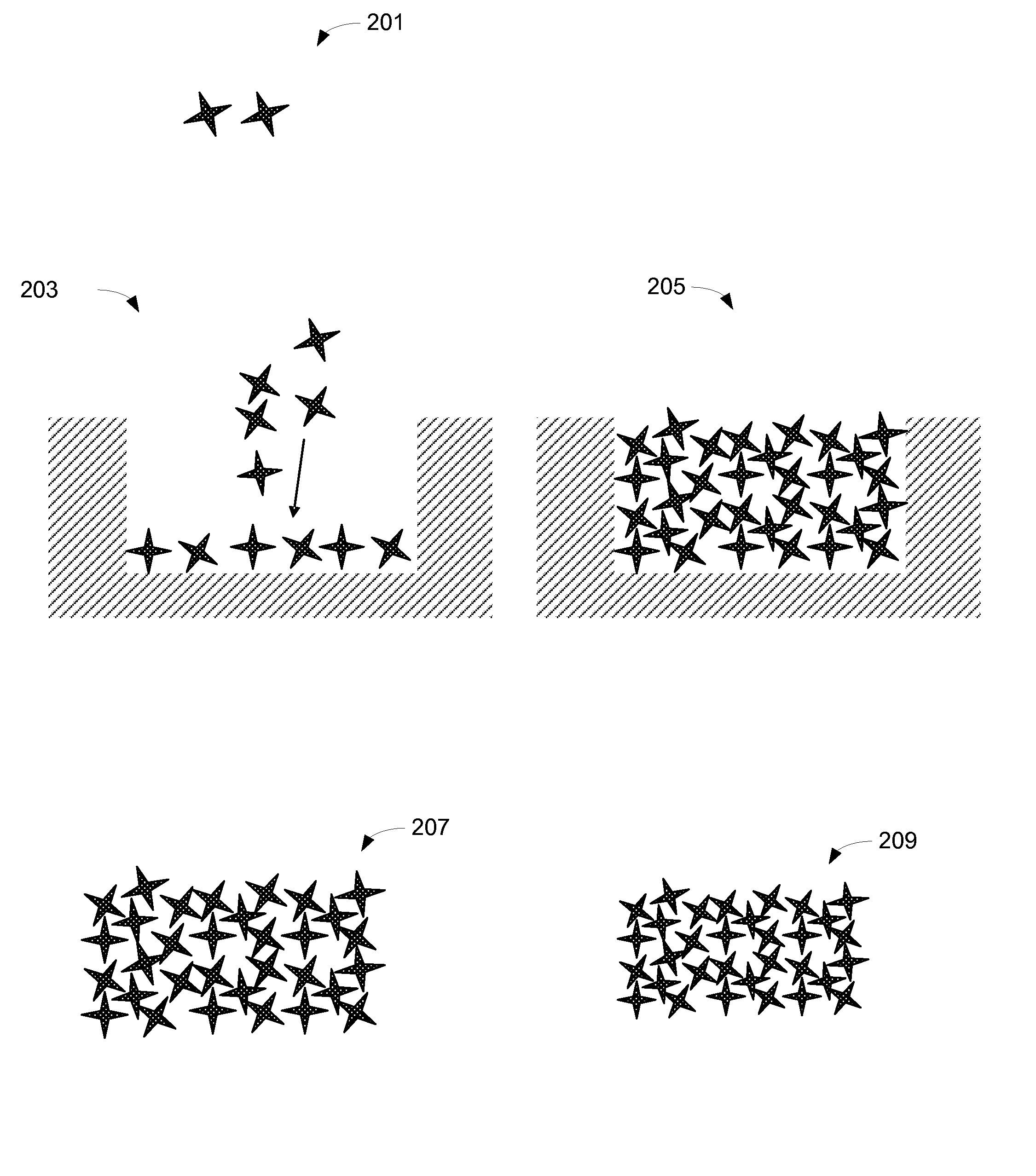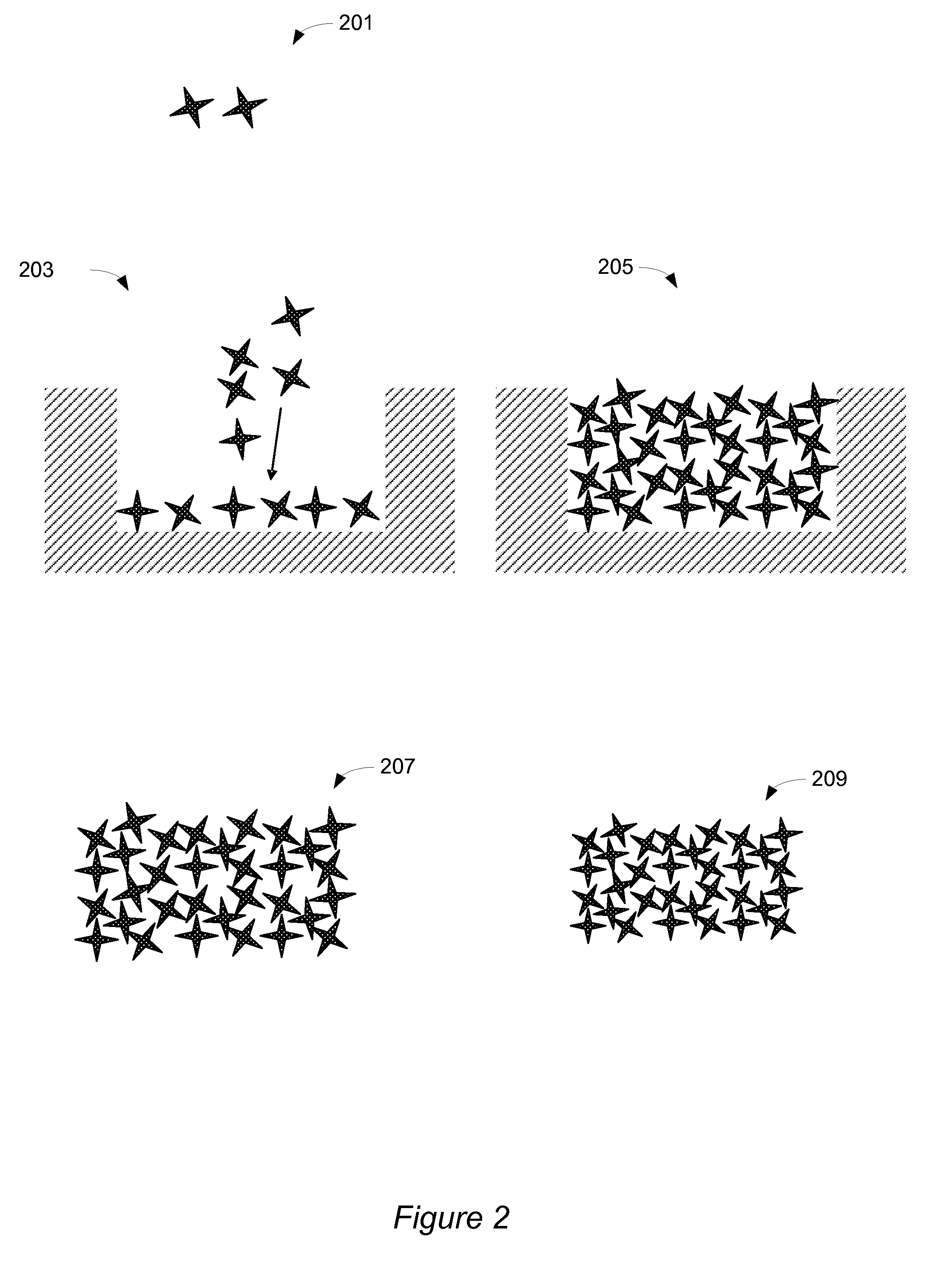Sintered porous structure and method of making same
- Summary
- Abstract
- Description
- Claims
- Application Information
AI Technical Summary
Benefits of technology
Problems solved by technology
Method used
Image
Examples
examples
[0093]The following examples are intended to illustrate various aspects of the invention, and do not limit the invention in any way.
Porous Stainless Steel Bed
[0094]A sintered free-standing bed of stainless steel cylindrical sleeve elements was produced. The packed bed was made as follows. Stainless steel 434 (38-45 micrometer particle size) powder was mixed with acrylic binder (15 wt % in water), polyethylene glycol 6000, and polymethylmethacrylate pore former spheres (53-76 micrometer diameter) in the weight ratio 10:3:0.5:1.5. The mixture was heated and dried, grinded and sieved to 2 in Argon). The sleeves were then piled into an alumina boat and sintered at 1300° C. for 4 hours in reducing atmosphere. A free-standing monolithic bed was easily removed from the boat after sintering. An image of the sintered structure is provided in FIG. 12a. Note that the shape of the sleeves provides a packed bed with pore size on the order of 1 cm. The walls of the sleeves are also porous, with p...
PUM
| Property | Measurement | Unit |
|---|---|---|
| Size | aaaaa | aaaaa |
| Size | aaaaa | aaaaa |
| Porosity | aaaaa | aaaaa |
Abstract
Description
Claims
Application Information
 Login to View More
Login to View More - R&D
- Intellectual Property
- Life Sciences
- Materials
- Tech Scout
- Unparalleled Data Quality
- Higher Quality Content
- 60% Fewer Hallucinations
Browse by: Latest US Patents, China's latest patents, Technical Efficacy Thesaurus, Application Domain, Technology Topic, Popular Technical Reports.
© 2025 PatSnap. All rights reserved.Legal|Privacy policy|Modern Slavery Act Transparency Statement|Sitemap|About US| Contact US: help@patsnap.com



